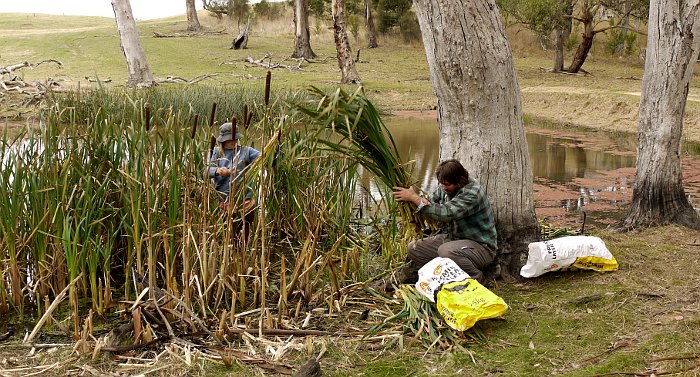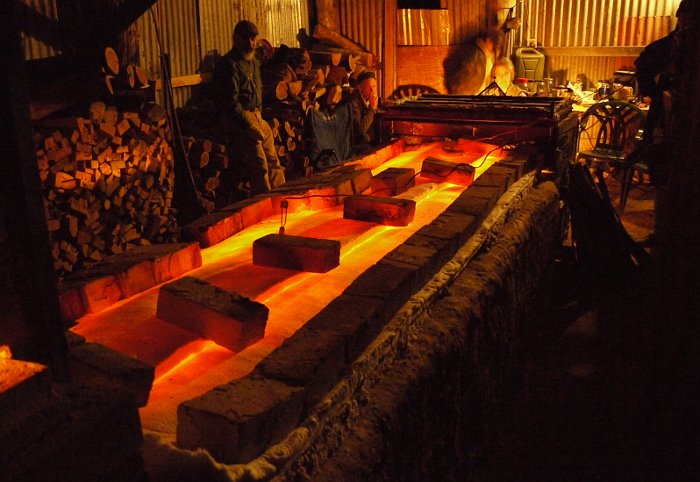Summary of Rosser Reduced Cooling
The
procedure is to execute a normal reduced wood firing and then, during
the
cooling cycle between 1000C and 900C, maintain a reducing atmosphere.
At 900C the atmosphere is allowed to resume oxidation. For large, slow
cooling kilns that is all there is to it, but for small kilns the
cooling between 900C and 800C should be encouraged to take at least
four hours. A convenient way to slow the cooling without slipping back
into reduction is to introduce a gas burner, and the cooling during
reduction can be ennabled by introducing fleshy vegetative material
into the firebox.
What it achieves
We think the method diminishes
the sort of mid-brown colour
which is a common result of firing with
wood, while encouraging the development of red flashing on lightly
ashed clay bodies without discouraging green fluid ash glaze colours.
At its best the mid-brown colours are replaced by very dark brown or
black. Importantly, red surface colours on shino-type glazes are
also encouraged, or at least not suppressed. (Disclaimer: no colour is intrinsically
bad - it depends on the context - but there is no doubt that firing
with wood, particularly with Australian Eucalypts, does tend to produce
a certain unrelieved mid-brown which Carol and I find
undesirable. I am not fond of glib pejorative terms but Jack Troy's
characterisation of this colour as "boot polish brown" is apt)

Zoe Rosser and
Dave Judge harvesting bulrushes for reduction while cooling. The
workshop was held at their kiln, located at Saltwater River, near Nubeena, Tasmania
Variations to the procedure
At
Eungella we have recently been firing with Flooded Gum (Eucalyptus grandis) for the initial
stages of the firing and then using Blackwood (Acacia melanoxylon) for the later
stages. The reducing fuel is always a decorative ginger (Hedychium
coronarium), chosen
because it grows profusely in our garden and is moist and fleshy. At
Saltwater River, not wanting to vary the procedure too radically, and
using
fuel readily available, we used Stringybark (Eucalyptus obliqua) for the
inital stages, followed by mixed Acacias for the later stages. The Acacia wood was roughly 60% Blackwood (Acacia melanoxylon), 30% Silver Wattle (Acacia dealbata) and 10% Black Wattle (Acacia mearnsii). For the reducing fuel we used the fleshy lower parts of plants know
locally as Bulrushes, harvested from a local farm dam just before use.
Various
clay bodies were used. The bodies we mix and use at Eungella were
used as controls, and workshop participants brought pots made from
clays commercially available in Australia, either mixed or as
bought. Conrad Calimpong brought pots made from clays available in
California. Most of the pots shown are the ones made from the clays we
use at home because these provide direct evidence that this reduced
cooling procedure is useful with wood types, and reduction material,
differing from the ones we use at Eungella.
|


